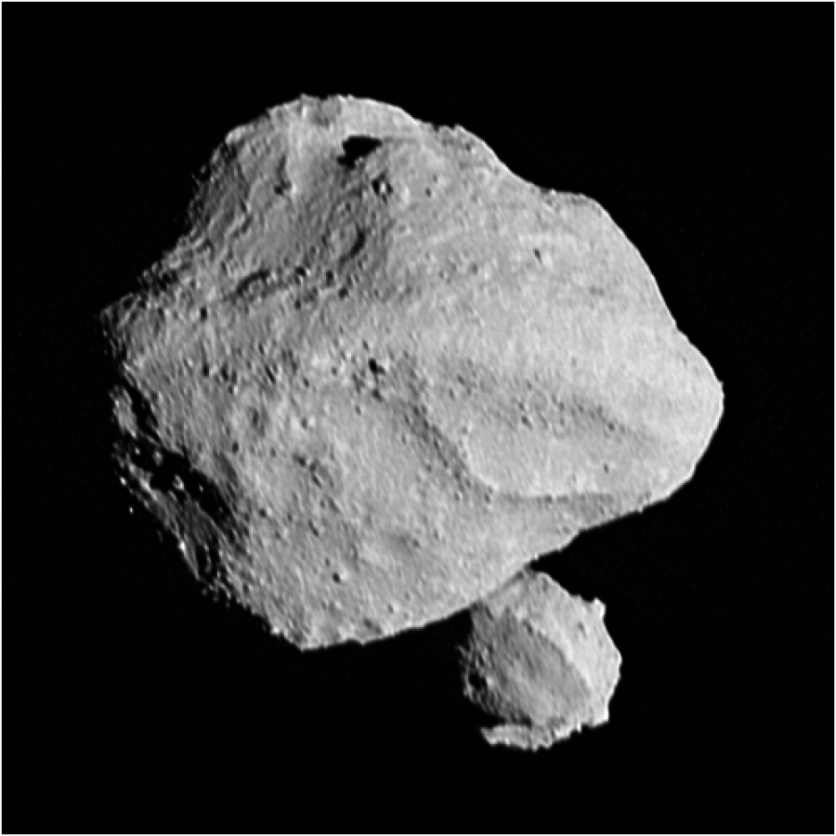NASA's Lucy spacecraft achieved a significant milestone on November 1 by flying past not one but two asteroids. The initial images sent back by Lucy unveiled an unexpected finding: the small main belt asteroid Dinkinesh is, in fact, a binary pair.
Hal Levison, principal investigator for Lucy, expressed his astonishment at the discovery, emphasizing the aptness of the asteroid's name, which means "marvelous" in the Amharic language.
Levison remarked, "When Lucy was originally selected for flight, we planned to fly by seven asteroids. With the addition of Dinkinesh, two Trojan moons, and now this satellite, we've turned it up to 11."

NASA's Lucy Spacecraft Encounters 2nd Asteroid During Dinkinesh Flyby
In the lead-up to Lucy's encounter with Dinkinesh, the team speculated about the possibility of it being a binary system due to observations of the asteroid's changing brightness.
The initial images confirmed this hypothesis, revealing Dinkinesh as a close binary. The pair of grey asteroids reportedly have a slightly jagged surface.
Preliminary estimates suggest that the larger asteroid spans about 0.5 miles (790 m) at its widest, while the smaller asteroid orbiting the big one is approximately 0.15 miles (220 m) in size.
NASA explains that the primary purpose of this encounter was to serve as an in-flight test for the spacecraft's capabilities, particularly the system enabling Lucy to autonomously track an asteroid hurtling past at 10,000 mph, known as the terminal tracking system.
Tom Kennedy, a guidance and navigation engineer at Lockheed Martin, hailed the series of images as "awesome," highlighting the success of the terminal tracking system even under unexpectedly challenging conditions.
He emphasized the difference between simulation and actual implementation, underscoring the significance of witnessing the system in action.
Although the encounter primarily focused on engineering tests, the scientific team is eagerly analyzing the data to gain deeper insights into the characteristics of small asteroids.
Read Also : New Computer Simulation Sheds Light on Early Galaxy Formation Aligned With NASA James Webb's Observations
NASA's Lucy Mission: 'Smallest Main Belt Asteroid'
Keith Noll, Lucy's project scientist, pointed out the exceptional nature of this encounter.
"We knew this was going to be the smallest main belt asteroid ever seen up close," Noll noted. "The fact that it is two makes it even more exciting. In some ways these asteroids look similar to the near-Earth asteroid binary Didymos and Dimorphos that DART saw, but there are some really interesting differences that we will be investigating."
Over the next week, the team will continue to download the remaining encounter data from the spacecraft. This data will be invaluable for evaluating the spacecraft's performance during the encounter and preparing for the upcoming close-up examination of the main belt asteroid Donaldjohanson in 2025.
This successful encounter sets the stage for Lucy's mission to explore the Jupiter Trojan asteroids, scheduled to commence in 2027.
Related Article : Are Talking Spaceships Coming Soon? NASA to Revolutionize Space Exploration with AI-Powered ChatGPT-Like Interface





